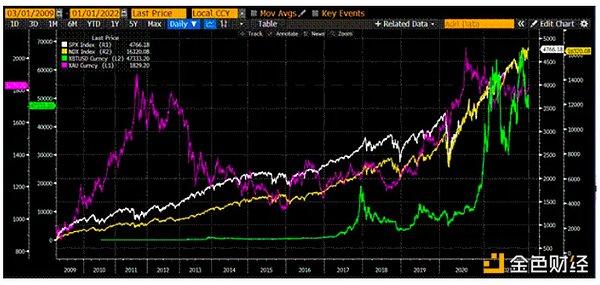Original | Odaily (@OdailyChina)
Author | Asher (@Asher_0210)

After experiencing the "Hyperliquid 50x leverage whale" long position cash-out event (related content can be found at: Why did the Hyperliquid whale self-destruct? Who is bearing the millions of dollars in losses?), Hyperliquid encountered a similar crisis again last night. This time, the sniper's target was more precise, choosing the smaller market cap and more easily manipulated Altcoin JELLY as the breakthrough point.
In a short period, JELLY's price fluctuated dramatically, with the 15-minute K-line showing potential gains over 100% and potential drops over 50%, throwing the market into extreme conditions, with short-term traders exclaiming "nerves clashing, retail investors could be liquidated in minutes". How did this hunting operation unfold? Odaily will provide a comprehensive review of the entire event.
[The rest of the translation follows the same professional and accurate approach, maintaining the original structure and meaning while translating to English.]Bitget CEO: Hyperliquid May Be Heading Towards FTX 2.0
Bitget CEO Gracy Chen posted on X platform that Hyperliquid's handling of the JELLY event was immature, unethical, and unprofessional, causing user losses and severely damaging its reputation. Although the platform claims to be an innovative decentralized exchange with a bold vision, its actual operation is more like an offshore centralized exchange, lacking KYC/AML mechanisms and facilitating illegal fund flows and misconduct. The decision to close the JELLY market and force settlement at a favorable price sets a dangerous precedent. For any exchange (whether CEX or DEX), trust is more important than funds, and once lost, it is almost irretrievable.
Moreover, the platform's product design has serious flaws: mixed funding pools expose users to systemic risks, and unrestricted position sizes provide opportunities for market manipulation. If these issues are not resolved, more altcoins may be used against Hyperliquid, risking it becoming the next major collapse in the crypto industry.
Andre Cronje: Position Size Is Not a Fixed Function of Leverage, DeFi Should Not Have Fixed Leverage
Regarding the Hyperliquid vault facing liquidation and loss, Sonic Labs co-founder Andre Cronje posted on X platform: Position size is not a fixed function of leverage, but depends on available liquidity and realized volatility. A small position can have 1000x leverage, while a large position may only have 1.2x. In DeFi, there cannot be fixed values.
CZ Cites Old Article Stating DEX Is Inferior to CEX, Emphasizes No Relation to Hyperliquid Liquidation Event
Additionally, CZ posted on X platform, citing a previous tweet: "I know I'm not smart. I admit when I don't understand something and often think that those who are capable must know some secret I don't. But occasionally, I realize that the most basic rules still apply." Notably, CZ specifically explained that to avoid confusion, the tweet was not related to today's Hyperliquid liquidation event, but was from his previous experience with AstherusHub on the BSC chain, a project in the Labs investment portfolio. They do not show liquidation prices and use an automatic deleveraging mechanism (ADL), so they would not encounter similar issues today.
Impact on Hyperliquid: Significant TVL Decline, Clear USDC Outflow Trend
Hours after the event, while the waves seem to have subsided, its impact on Hyperliquid remains deep and "heavy". According to Hyperliquid's official website, HLP's TVL was as high as $240 million before the event, but has now significantly dropped to $195 million, losing nearly 20% of funds in a short time. This dramatic fluctuation reflects the market's wavering trust, and investor confidence is clearly yet to be restored.

Furthermore, according to defillama data, after the Hyperliquid liquidation event, USDC funds on the platform experienced a massive outflow, with a net outflow of $175 million. Total USDC holdings dropped from $2.217 billion before the event to $2.004 billion.

USDC Net Outflow Data on Hyperliquid
Summary
This hunt for Hyperliquid has thoroughly exposed governance and transparency issues in decentralized perpetual contract exchanges. Although the official reason given was validator voting to delist the trading pair, ultimately "pulling the plug" and forcibly settling has led many to question how decentralized DeFi exchanges really are.
This event also reminds all DeFi projects that merely having a "decentralized" label is far from enough. When facing extreme market conditions, the key is whether the platform can stabilize the situation while maintaining fairness and transparency. In the future, for decentralized on-chain DeFi projects to win market trust, they must find a better balance between transparency, governance mechanisms, and risk control, otherwise similar crises may not be the last.







